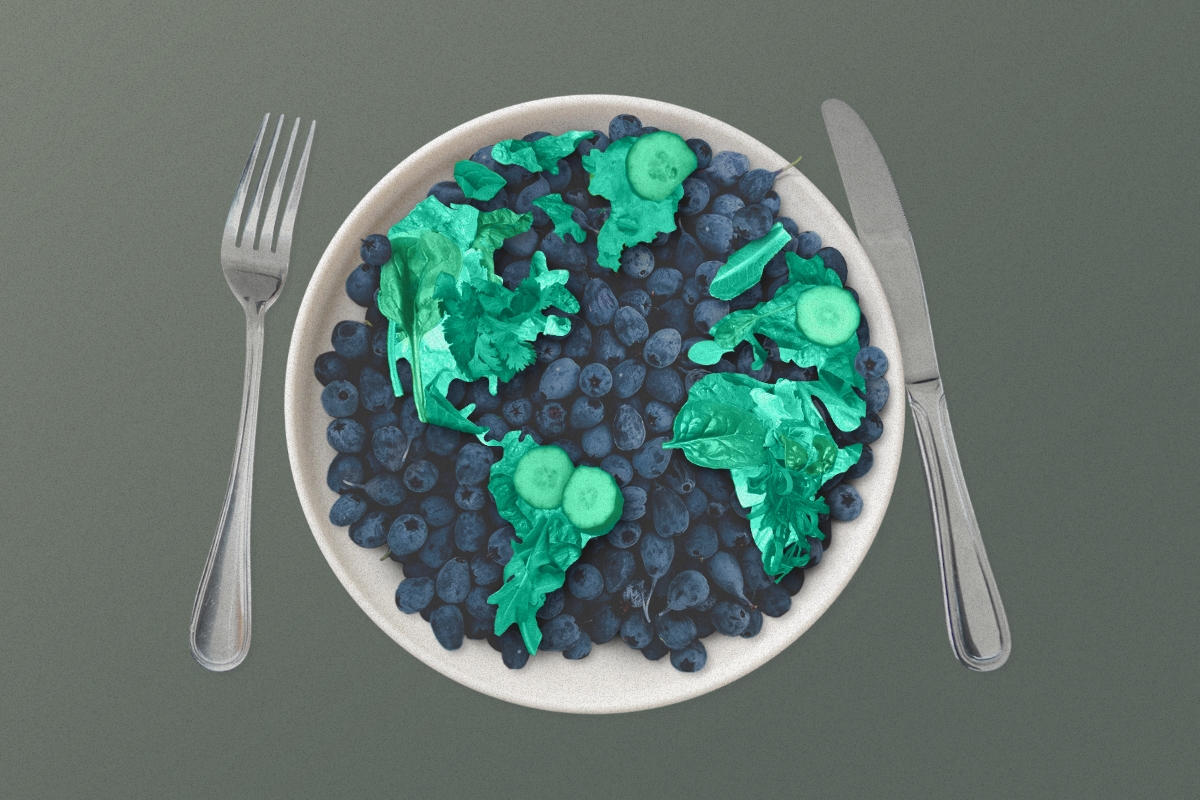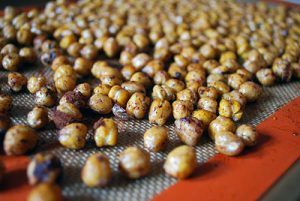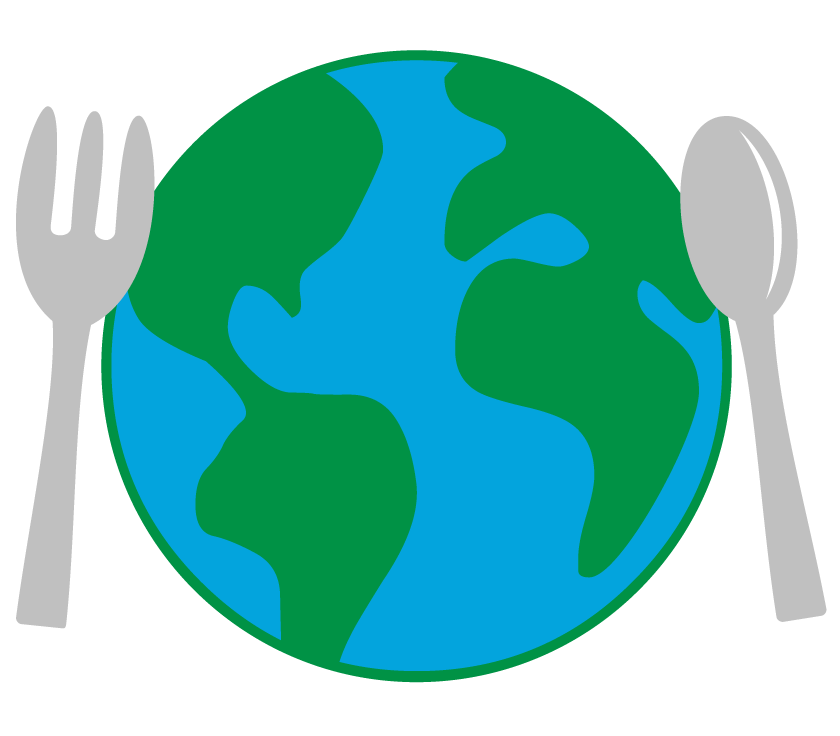
Just as different foods can have differing impacts on human health, they also have differing impacts on the environment. Shifting towards a “planetary health diet” can nurture both people and planet.
Human diets inextricably link health and environmental sustainability, and have the potential to nurture both. [1] Increased food production over the past 50 years has helped improve life expectancy and reduce hunger, infant and child mortality rates, and global poverty. However, such benefits are now being offset by shifts towards unhealthy diets.
Globally, as nations have urbanized and citizen incomes have increased, traditional diets (typically higher in quality plant-based foods), have transitioned to a “Western-style dietary pattern,” characterized by high consumption of calories, highly processed foods (refined carbohydrates, added sugars, sodium, and unhealthy fats), and high amounts of animal products. [2,3] Along with the negative human health impacts associated with this nutrition transition, this dietary pattern is also unsustainable. Current food production is already driving climate change, biodiversity loss, pollution, and drastic changes in land and water use.
Different food, different impact

(Source: World Resources Institute. [4] Details about the data used to produce this figure available here.)
Transitioning towards healthy diets from sustainable food systems—especially with our global population slated to reach 10 billion by 2050—poses an unprecedented challenge. However, research by an international working group of scientists shows this “Great Food Transformation” could be achievable through a combination of dramatic reductions in food losses and waste, major improvements in food production practices, and substantial dietary shifts toward mostly plant-based dietary patterns. [1]
Defining a “Planetary Health Diet”
In 2019, the EAT-Lancet Commission developed the world’s first scientific targets for healthy and sustainable food systems, including a “planetary health diet” with defined daily consumption ranges for each food group.
Update: The 2025 EAT-Lancet Commission Report
In October 2025, the EAT-Lancet Commission released a scientific update on what defines a healthy, sustainable, just food system in today’s world.
Building on the landmark 2019 report, it:
- Reviews new evidence on food systems across health, climate, biodiversity and justice.
- Updates the Planetary Health Diet, emphasizing how culturally adaptable, plant-rich diets can benefit people.
- Assesses food’s impact on all planetary boundaries, including emissions, land use, and freshwater.
- Introduces global modeling to show how we can feed 10 billion people within environmental limits.
- Puts justice at the center — from fair wages to healthy food access.
- Identifies 8 solution areas to guide food systems transformation.
This page is currently being updated to reflect the latest evidence from this report.
This dietary pattern—characterized by a variety of high-quality plant-based foods and low amounts of animal-based foods, refined grains, added sugars, and unhealthy fats—is designed to be flexible to accommodate local and individual situations, traditions, and dietary preferences.
Created to meet nutritional requirements and promote health, all while staying within “planetary boundaries,” the Commission found that global adoption of this planetary health diet would provide major health benefits. Modeling studies show that between 10.9 to 11.6 million early deaths could be averted each year—a 19% to 23.6% reduction from current adult mortality rates. [1]
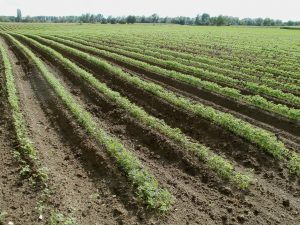
Compared with current diets, this shift will require global consumption of foods such as red meat and sugar to decrease by 50%, while consumption of fruits, nuts, vegetables, and legumes must double. That said, the Commission emphasizes the importance of tailoring these targets to local situations. For example, while North American countries currently consume almost 6.5 times the recommended amount of red meat, countries in South Asia eat only half the recommended amount. [1]
Undoubtedly, making such a radical shift to the global food system is unprecedented, and will depend on widespread, multi-sector, multi-level action. Alongside dramatic reductions in food waste and major improvements in food production practices, the Commission’s report calls for “international and national commitment” through a range of policy measures and actions needed to make healthy and sustainable foods more available, accessible, and affordable. From governments and policymakers to marketers, industry, the media, educational institutions, farmers, chefs, physicians, and consumers—everyone has an important role to play in this Great Food Transformation.
Plant-forward for planetary health
Created through Menus of Change (a joint initiative of The Culinary Institute of America and the Harvard T.H. Chan School of Public Health’s Department of Nutrition), plant-forward describes a broad set of dietary patterns and approaches to menu design that deliver both personal and planetary health but also preserve a wide range of choices.
Preparing a Planetary Health Plate
It’s clear that what we put on our plates has a major impact on the environment. Eating more healthfully and more sustainably go hand-in-hand, meaning we can develop sustainable eating practices that improve our own health while also benefiting the health of the planet. If you’re interested in practicing a planetary health diet, but confused by the specific targets in the table above, here are some tips that may help:
- First of all, be sure to note that these ranges are based on daily energy intake of 2,500 calories for an average adult. That means your individual optimal intake will depend on age, body size, and level of physical activity. (The Commission’s report includes special considerations for young children, adolescents, and pregnant and breastfeeding women.)
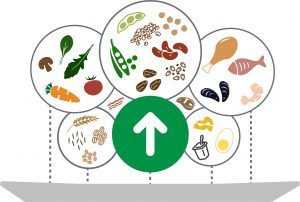 This dietary pattern is also intended to be flexible enough to accommodate individual situations, traditions, and dietary preferences. Animal products are minimized, not completely excluded, so there is a range of options for omnivores as well as those who follow vegetarian or vegan diets.
This dietary pattern is also intended to be flexible enough to accommodate individual situations, traditions, and dietary preferences. Animal products are minimized, not completely excluded, so there is a range of options for omnivores as well as those who follow vegetarian or vegan diets.- Seeing certain foods listed in grams per day may be unfamiliar. For example, how to eat only 13 grams of eggs per day when a single large egg is about 50 grams? You might be able to stick to this amount if you scramble a single egg into a stir-fry serving for multiple people, however it’s easier to think about your egg consumption on a weekly basis, where this equates to around 2 eggs.
- The same goes for other animal products. Eating even the upper-limit of 14 grams per day of red meat (a fraction of a single hamburger patty) may not be as realistic as thinking about saving this daily amount for one day during the week (e.g. eating one whole hamburger patty). Aim to consume no more than 98 grams of red meat (pork, beef or lamb), 203 grams of poultry, and 196 grams of fish per week.
- Understandably, if you’ve grown up (or have grown accustomed to) having beef, pork, and other red meats on your plate at most meals, such a change may seem daunting. But remember you don’t have to completely cut it out to make a difference for your health and the health of the planet. If you’re not quite sure where to start, here are four key approaches to cutting back the red meat while keeping your meals filling and flavorful.
- To get a sense of implementing this dietary pattern over the course of a week, here is a sample of what someone eating a varied, Western diet (of 2,500 calories) might select:
- It also helps to see these targets visualized as a complete plate—half of which would be filled with fruits and vegetables (starchy vegetables, like potatoes, are limited), while the other half should consist of primarily whole grains and plant-based protein foods, with unsaturated oils and modest amounts of animal-based protein foods. Look familiar? This guidance is closely aligned with the Healthy Eating Plate.

What Else Can I Do?
Alongside a shift to a planetary health diet, moving towards a more sustainable food future will also require major improvements in food production practices and significant reductions in food losses and waste. Food waste is another complex problem that occurs well before our homes, but here are some strategies for shopping, storing, and repurposing that can minimize your personal impact.
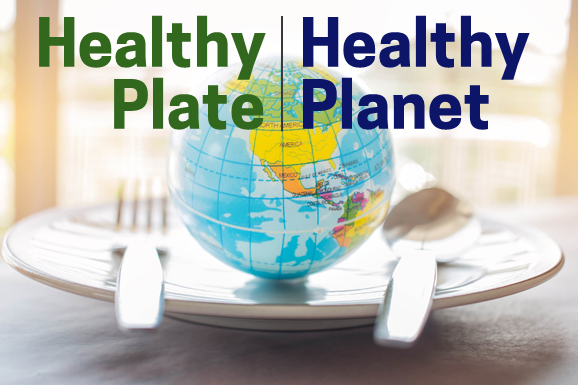
LEARN: Simple steps to optimize personal and planetary health
Related
